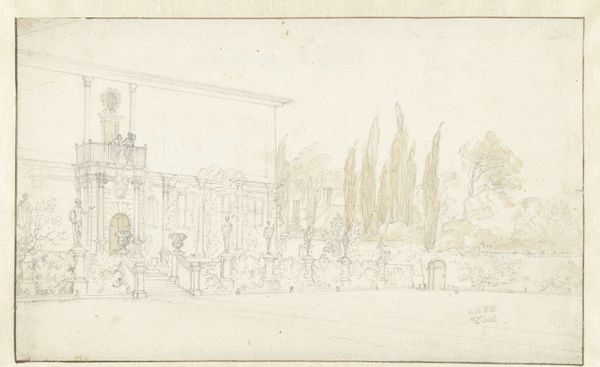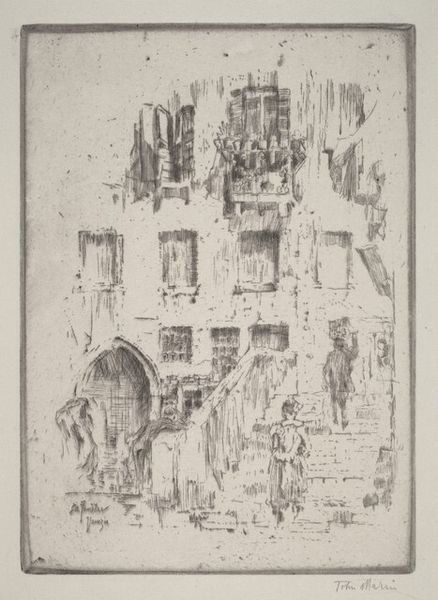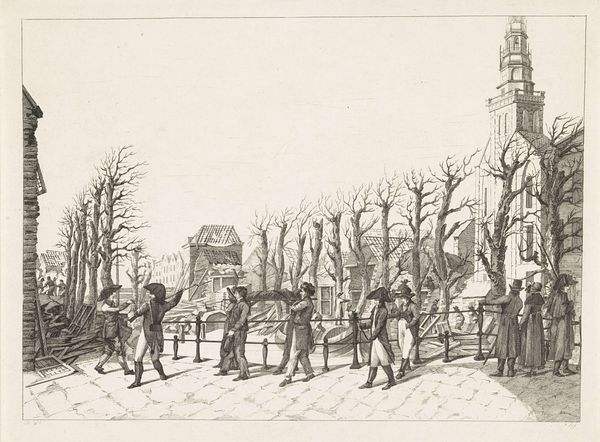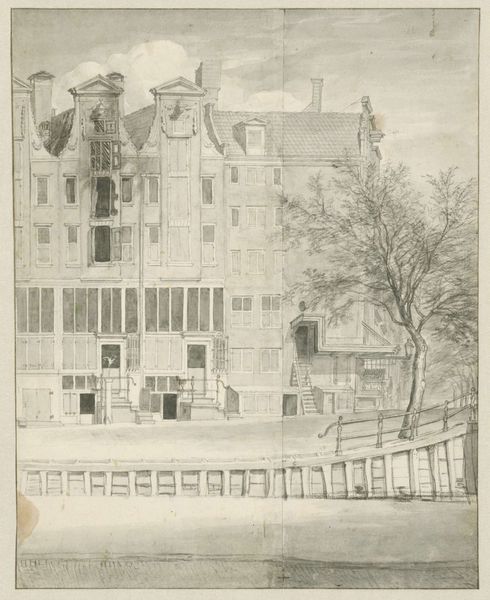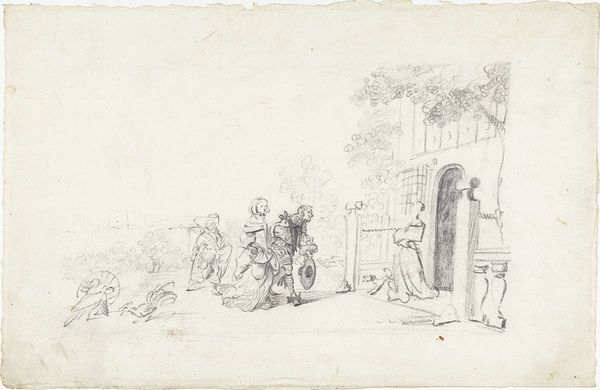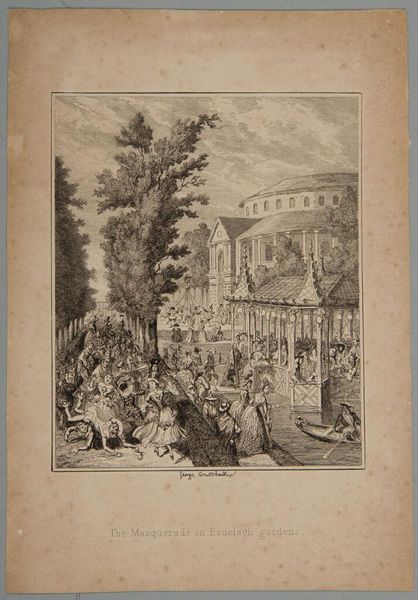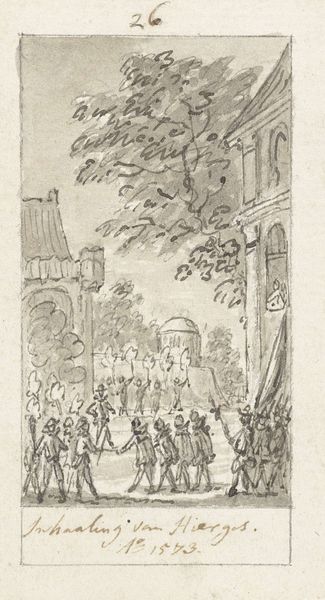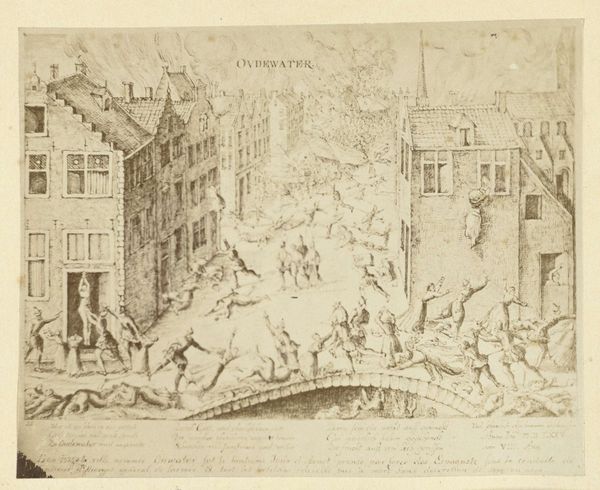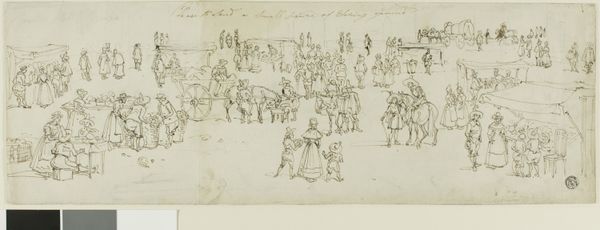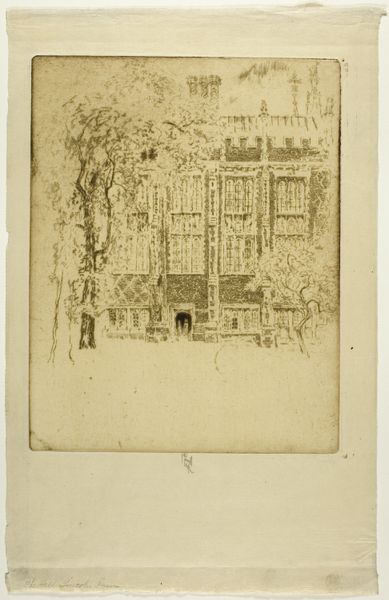
Figuren op het ijs van bij het uitgebrande huis op de Leidsegracht, 1684 after 12
0:00
0:00
drawing, pencil
#
drawing
#
dutch-golden-age
#
pencil sketch
#
pencil
#
cityscape
#
genre-painting
Dimensions: height 315 mm, width 246 mm
Copyright: Rijks Museum: Open Domain
Curator: Before us we have "Figures on the Ice near the Burnt-Out House on the Leidsegracht, 1684" by Jan van der Heyden, a pencil drawing currently held at the Rijksmuseum. It's an evocative depiction of everyday life amidst the aftermath of disaster. Editor: My immediate impression is one of subdued resilience. Despite the skeletal remains of the building looming in the background, the foreground bustles with life; the ice transformed into a temporary theater for ordinary activities. There is symbolic contrast here. Curator: Precisely. The drawing provides a window into the collective experience of a community grappling with tragedy. The fire becomes a shared trauma, yet the frozen canal fosters social connection and underscores their mutual recovery, don't you think? This embodies the spirit of the Dutch Golden Age, portraying people coming together despite calamity. Editor: Absolutely. Consider the choice of winter as a setting—a season typically associated with starkness and death. Yet, here it becomes a period for communal engagement, with symbolic traces in how these people move about one another. The figures clustered together can evoke something of unity or family bonds amidst the ruin. The body language of each could hint at themes of resilience or quiet defiance. Curator: The delicate pencil strokes capture nuances beyond simple depiction. They remind me how visual representation shapes narratives. Here we see a micro-society emerging, reclaiming space from devastation. In the details, are there certain class implications visible, too? Does it emphasize communal activity as an attempt for unification in the reconstruction period? Editor: I would suggest we note how carefully Jan van der Heyden presents this seemingly everyday event. By focusing on figures against the burnt backdrop, he creates potent psychological tension: ordinary figures framed by trauma and vice-versa. It asks us to remember what symbols remain after everything else is lost. Curator: Considering this poignant relationship, it would seem that van der Heyden created more than just a genre scene but one that reveals a city’s persistence via visual symbols and subtle gestures toward the collective human capacity to endure. Editor: Ultimately, I see in this drawing an image of fragile beauty found even among profound destruction—a testament to human resilience carved from a bleak moment in Amsterdam's past.
Comments
No comments
Be the first to comment and join the conversation on the ultimate creative platform.

